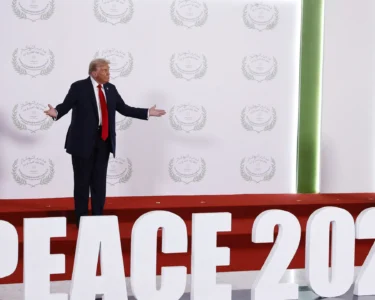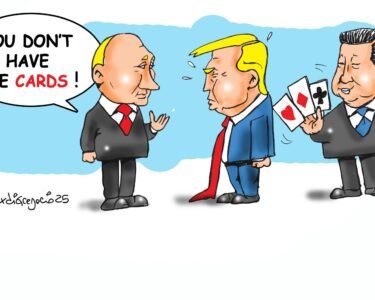A market of 900 million consumers representing 48% of the world's GDP is the only curb on Chinese expansion
Trump is making a serious mistake in the way he plans to handle the confrontation with China
The United States, by favoring, in 2001, Beijing's entry into the World Trade Organization (WTO) without setting strict conditions, created its most dangerous enemy. China's GDP, which was just $1,339 billion, has multiplied by 15 and now travels around $19 billion. Under Xi Jinping The dictatorial regime instead of weakening has consolidated. China is an economic power at the forefront of many technological fields, not only in batteries and solar panels. Beijing's power has been strengthened after the dastardly Russian invasion of Ukraine. Putin has tied himself hand and foot to Xi and is turning Russia into a kind of Chinese colony.
The United States has no coherent long-term strategy to contain China's advance. The tariff wars ,for 10 years now, have not yielded appreciable results. The famous decoupling, decoupling from the Chinese economy is not an easy task.
With a good deal of crudeness and superficiality, Trump has chosen three paths that lead to worsening the U.S. position: blandish Putin to try to detach him from China, ruin friendly relations with the European Union for no reason, and bombard the world with disproportionate tariffs by playing upward especially with China.
These are suicidal choices. Russia has no interest in abandoning its Chinese friend to get closer to the United States. Economically it has little to gain because the U.S.-unlike China-does not need Moscow's main resource oil and gas. Nor do the Americans plan to buy weapons from Putin. U.S. financial investment itself has little incentive because of the severe international isolation in which Russia finds itself because of the war. Putin would never leave an ally and friend who like him will be in power for the next 10 years to strike weak deals with a president who in 18 months could be a lame duck. Putin has everything to gain from Trump's "caresses": he reaccredits himself internationally, balances his prestige a bit against the stronger Xi, and has more room to sow discord in Europe.
The tariff war does not scratch the surface of China, which, being a dictatorship, can make its people digest any backlash in reducing exports. Moreover, China may increase domestic demand to make its people consume more and may try to forge closer trade agreements with the very Europe that Trump misses no opportunity to offend and treats as an enemy .
And here we come to the most serious aspect of Trump's policy.
The U.S. president does not understand that if the U.S. wants to contain China alone, it cannot do it and needs to put up a united front with Europe. The solution is economic and financial integration between the U.S. and the European Union, incorporating the U.K. and Canada as well.
China today accounts for 18.43% of world GDP, the U.S. for 25%, the EU for17.63%, UK for 3%, and Canada for 1.99%.Together the Western Euro-Atlantic front reaches 48.1\3 % of world GDP, 2½ times that of China. A true economic-financial battleship that would have a market consisting of 448 million EU, 343 million US, 70 million UK and 42 million of Canada. In total, over 900 million consumers who are quite wealthy compared to the approximately 500 million middle-class Chinese with incomes significantly below the average incomes of various Western countries.
Such a large and rich market would have all the resources to create giants in all strategic sectors and could have all the investment needed to maintain technological and scientific supremacy, the real determining factor in gaining primacy and hegemony in world markets.
Needless to add that even in terms of enormous military spending capacity, there would be no comparison with China.
Trump, on the other hand, does everything the opposite. Unfortunately, there is no sign in the United States of a vision like the one outlined here. Big economists, managers, strategic consulting firms, think tanks and many study centers would do well to devote attention to the scenario of a large market of 900 million people that accounts for 48% of world GDP.





